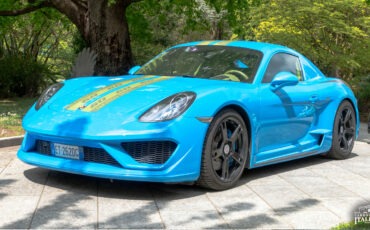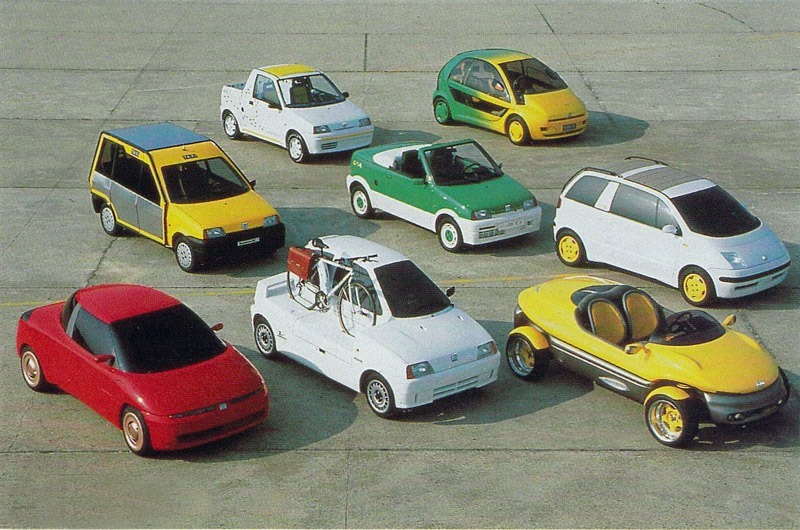
At the 1992 Turin Motor Show, Fiat unveiled a series of prototypes designed by famous Italian coachbuilders to celebrate the arrival of the small Cinquecento on the market. None of these concepts had an “official” production follow-up under the Fiat brand (but Giugiaro’s ID Cinquecento will give birth, with great results, to the Daewoo Matiz, and Maggiora built a small series of its creation), but this operation was a shining example of Italian automotive creativity, at the time supported by the value of coachbuilders and design institutes. Here are the creations which were exhibited at the Fiat Stand.
Fiat Cinquecento Birba
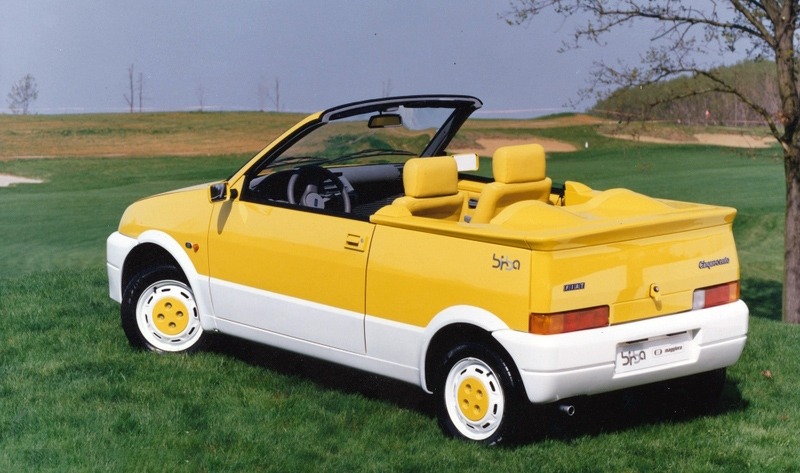
The Fiat Cinquecento Birba is a four seater cabriolet designed by the Maggiora atelier, the same one that will be responsible for the production of the Fiat Barchetta from 1995. Unlike the other cars in this review, it will actually be built by Maggiora itself in a few examples at the request of some customers. For the rest, it remains quite faithful to the original model, rollbar aside.
Fiat Cinquecento Cita
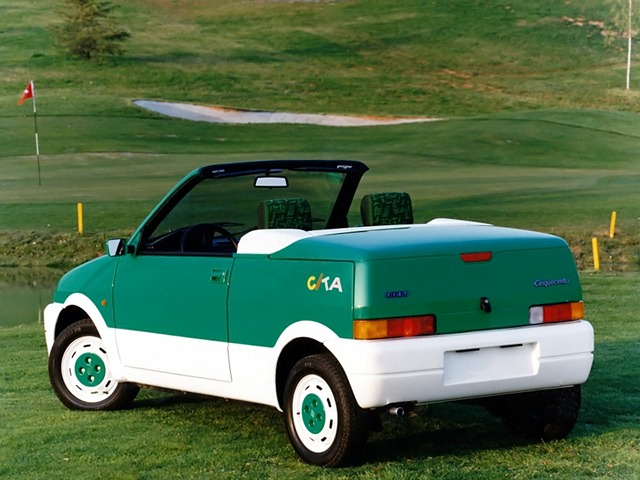
The Cinquecento Cita got its name from the Moretti Cita citycar. This open-top two-seater, also faithful to the citycar from which it takes its cue, is instead a creation of the Stola coachbuilder designed by Aldo Garnero. As is the case on the discoveries of the time, the fabric soft top adopts a PVC rear window. As on the Birba, bumpers and bumper fascias are painted to contrast with the bodywork. The solution of such a generous third volume hints at the coupe-cabriolets that would become all the rage in the following decade.
Fiat Cinquecento Fionda
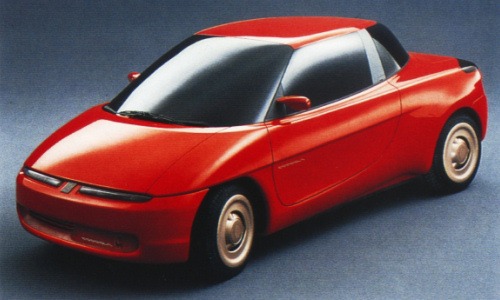
The Cinquecento Fionda is the most futuristi proposal. Mechanics and platform are the same as the starting model made available by Fiat itself, but otherwise this creation of the Coggiola coachbuilder has nothing in common aesthetically. The soft, sleek lines are reminiscent of a small coupe.
Fiat Cinquecento 4x4 Pick-up
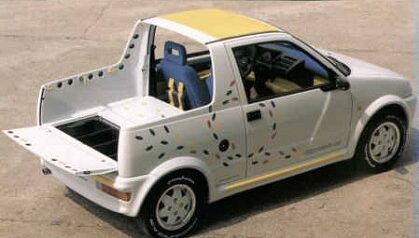
The Fiat Cinquecento Pick-Up by Pininfarina: Four-wheel drive and a center pillar that remains fixed and act like rollbar make this car a mini pickup truck. A small Landaulet: this configuration is reminiscent of Suzuki’s small 4×4 soft tops. The rear seats, when not needed, can fold down into the floor flush with the cargo area, transforming the car into a pickup truck. A solution reminiscent of the Citroen C3 Pluriel.
Fiat Cinquecento ID
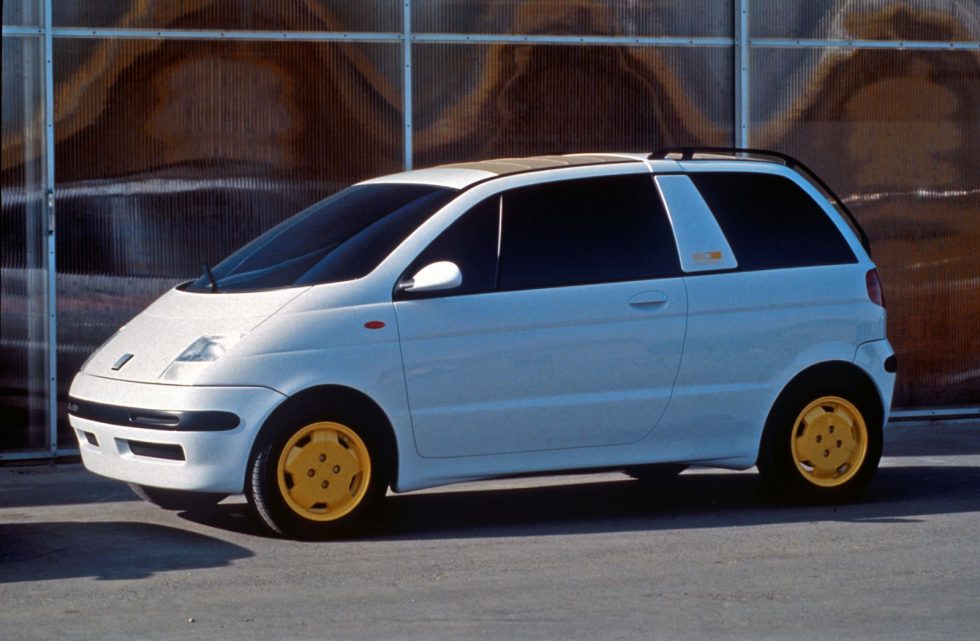
The Fiat Cinquecento ID is Italdesign’s interpretation of the Cinquecento with MPV shapes and similar overall dimensions. It was not made explicit at the time, but it was a proposal for a possible heir to the Italian citycar itself. Fiat, as is known, would prefer not to follow up on Giugiaro’s idea, which in turn would evolve the prototype into the Italdesign Lucciola. Instead, Daewoo will be the one to take advantage of this, starting from this project and creating its successful Matiz.
Fiat Cinquecento Rush
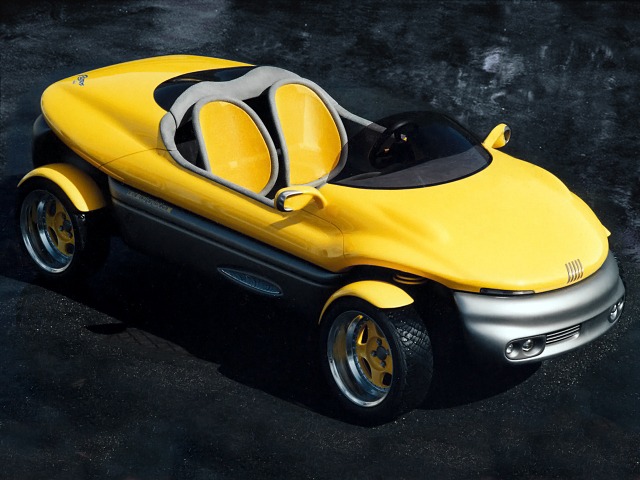
Created by Bertone under the creative direction of Luciano D’Ambrosio, the Cinquecento Rush is a modern dune buggy developed on the basis of the small Fiat citycar. Although highly original, the dune buggy was not a simple showcar, but a prototype whose features did not preclude an eventual production follow-up. The soft, rounded shapes in line with the brand’s later products, starting with the Punto, of which Bertone himself would make the popular Cabrio version.
Fiat Cinquecento Griguà
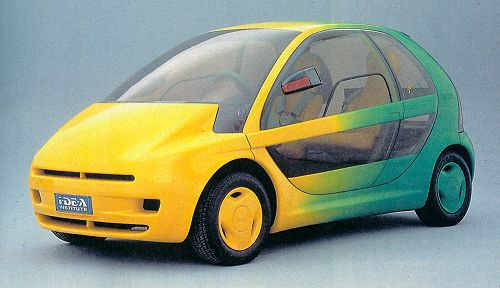
With the Fiat Cinquecento Griguà, the Turin-based I.DE.A Institute offers a futuristic version of Fiat’s citycar with modern shapes that are still relevant today with large glass surfaces. The car explores the possibility of a passenger compartment that can give plenty of room for three people. The driver is seated in the center, while the two passengers find placement to the side, but in a more rearward position.
Fiat Cinquecento Z-Eco
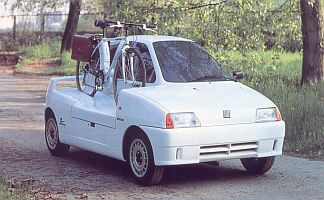
As guessed by its name, the Cinquecento Z-Eco is the proposal of the well-known Milanese atelier Zagato. The idea stems from the desire to accompany four-wheel mobility with “soft” transportation solutions, perhaps to leave the car behind and access the traffic-free historic centers of big cities by bike.

